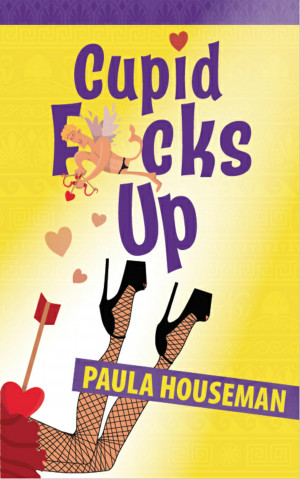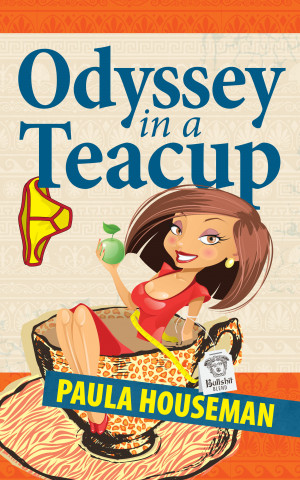Interview with Paula Houseman
Published 2016-07-12.
What is your writing process?
Where my writing is concerned, I don’t follow a step-by-step process. I’m not really a plotter; I’m more of a ‘pantser’—I fly by the seat of my pants. My creativity doesn’t want to be constrained by a pre-determined plan. And relying on instinct rather than logic makes the writing process mysterious and so much more interesting. And more real. I’m also interested in other writers’ techniques, and I learn a lot through reading; through paying attention to what I love in others’ writing—what makes me want to keep turning the pages? I also edit rigorously, but I follow novelist Zadie Smith’s advice: ‘The secret to editing your work is simple: you need to become its reader instead of its writer.’
I have awesome conversations with my characters! Most importantly, I feel when I write. If I’m crying while I’m writing a sad scene, or raging when my protagonist is locking horns with an obnoxious character, or getting turned on when I’m writing a sex scene (!), then I know that what I’m writing has depth and will resonate with the reader, because we relate through emotions, not thoughts.
What inspires you to write?
I grew up at a time when women and girls were taught to make ‘nice’, and the catchphrase was ‘Children should be seen and not heard’. That’s tough, especially when you’re a spirited child who thinks outside the square.
We need to be able to express who we are, all of us, not just our ‘niceness’. I used to express through art, but it wasn’t enough. I needed to find my voice—my many voices. And for me, the beauty of fiction writing is that I can do that through my characters because they represent the many aspects of the human psyche. I can give voice to the extremes of emotion without being shamed for it. That helps my journey, but I believe it also helps the reader’s because I’m writing from the soul, where writer and reader connect at the most basic level of humanness.
Extending on that, I have some big ideas that are outside mainstream thinking, and that have helped me through difficult times (and still do). And if they help me, they can help others.
What's the best part of being a writer?
Like Ruth Roth (the protagonist in my book, Odyssey in a Teacup), for a lot of my life I struggled with a feeling of being a misfit. That was tough because everyone has a need to belong. But I assumed belonging was about being a member of a group of like-minded people. And while I do fit with several groups, I’m not a mainstream thinker.
Writing has helped me understand that belonging doesn’t necessarily entail finding a community out there; that you may only feel mostly aligned with an art form. The best part of being a writer—of doing something I love—is that I can be me. When I’m writing, I’m reconciling with the many aspects of myself by giving them form, depth and expression through my characters. The more I breathe life into them, the more I accept them as part of my humanness. And that basic humanity, beyond all social categories, is where I fit.
Tell us about yourself and how many books you have written
I was born in Adelaide, South Australia. I moved to Sydney, New South Wales when I was nineteen (for love, marriage, children and dogs).
For a long time, I just assumed my childhood was an average one (although … having a lamb as a domestic pet in an urban setting should have been a giveaway). My parents were not your average Aussies and I was not your average kid. They were born and raised in Egypt, Jewish and of Romanian descent. I was caught in a cultural crossfire as they struggled to assimilate. Not an easy road, but, oh … what fabulous raw materials for a writer!
‘Odyssey in a Teacup’ is my first novel and I've almost completed the sequel (humour|romance). But there’s still an anthology of dysfunction imprinted on my psyche and hankering for show-and-tell!
If you were going to be stranded on a desert island and allowed to take 3 or 4 books with you what books would you bring?
An eclectic combination:
1. A Sandra Brown novel because her books are unputdownable, because I love a good mystery, because of her kick-arse female protagonists, and for a dash of romantic escapism
2. A Lee Child novel for his lead character, the indomitable Jack Reacher, a loner who makes reclusive look appealing, and who can find his way out of any predicament
3. ‘Women Who Run with the Wolves’, to soothe and nourish my soul and strengthen my spirit in this confronting situation, and because I can read this book a hundred times and find something new and inspiring in every reading (which would help me change my perception of this predicament even if I can't physically find my way out of it).
If you could travel through time, where would you go and why?
Strange as it sounds, I do travel through time ... regularly! I think we all do, in our own minds.
Life’s made up of stories—what we believe about ourselves comes from the stories we’re told by family, by society. And these stories get reworked and polished over the ages to suit the current ideology. So, there are many layers of them. But all stories have their roots in the original, raw ones—the ancient myths.
Our modern stories, though, are driven by a ‘let-it-go-baby!’ catchcry, and direct an onward and upward form of time travel. I choose to travel back because I want to retrieve parts of me I’ve left behind, then I can take all (or at least, more) of me into the future. And I can’t really write with soul unless I travel downwards into it.
Do you remember the first story you ever read, and the impact it had on you?
I can’t remember the first story, but I do remember my favourite childhood story: Heidi.
It wasn’t just the plot that captured my imagination, but also Johanna Spyri’s attention to detail, and her descriptiveness that stimulated the senses. It’s something I try to bring into my writing. If I’m describing a feast, I want the reader’s mouth to water!
How do you approach cover design?
With respect!
The cover is the first thing a potential reader sees. As a reader myself, if I come across a DIY cover, I’m not going to look past it. Maybe I can pick it easily because I used to be a graphic designer, but I still employed a professional book cover designer and would do the same thing with future novels.
Do you read books that fall into the same genre your write in?
Mostly, no. I like reading whodunnits (with a splash of romance)! Sandra Brown is one of my favourite authors. And I also enjoy same-character series: Harlan Coben's Myron Bolitar, Janet Evanovich's Stephanie Plum, Lee Child's Jack Reacher, Michael Connelly's Hieronymus "Harry" Bosch, Robert Crais's Joe Pike and Elvis Cole. All strong characters, they’re flawed heroes, not cardboard cut-outs. Their imperfections humanise them and make them appealing. I aspire to their moxie and relate to their realness. I find the human psyche fascinating, and these characters, particularly the last four, have an air of mystery about them that makes me want to get to know what makes them tick. Every book they feature in reveals a little more about them.
Smashwords Interviews are created by the profiled author or publisher.
Books by This Author
My Troyboy is Twat (Book 3, Ruth Roth Series)
by Paula Houseman
‘Keep your mouth shut!’ This, from Ruth Roth, inspirational columnist for a women's magazine.
It's not the best advice to give your new husband, but men don’t listen, do they?
When he tells all, the fall-out is like a layover in hell. Horrid, and yet…tantalising. Who knew the underworld had so many subdivisions? But Ruth may be stuck in the horrid after another skeleton comes out of the closet!
Cupid F*cks Up (Book 2, Ruth Roth Series)
by Paula Houseman
Women's magazine columnist Ruth Roth’s first time with her man leaves her gasping. It has nothing to do with his prowess or the taboo-ness of the romance. And it’s not like she’s inexperienced (divorced and in her mid-forties, she has two teenage children). It’s her mother’s unexpected and unwelcome presence in the bedroom that has Ruth all bent out of shape!
Odyssey In A Teacup (Book 1, Ruth Roth Series)
by Paula Houseman
A tut-tutting, big-breasted, modern-day gorgon; a humourless schoolmarm with an unfortunate name and freakishly long, yellow incisors (yeesh)—these are the kinds of people Ruth Roth regularly encounters. Add in daily dealings with an acerbic mother who squawks like a harpy, a father with a dodgy moral compass and a God complex, a bitchy mirror, and Ruth’s existence feels like a Greek tragicomedy.



